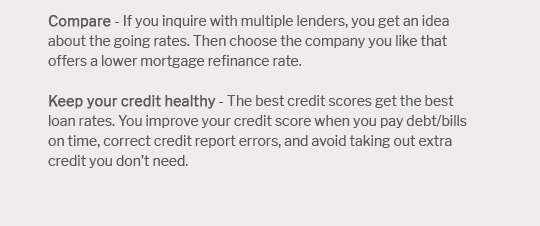 |
|||
 |
 |
 |
||
|---|---|---|
 |
||
 |
||
 |
||
 |
||
 |
||
 |
||
 |
 |
 |
 |
30 Year Fixed Mortgage Rates Today: Insights and AdviceThe 30-year fixed mortgage rate is a cornerstone of the American home financing system. With its long-term stability and predictability, it remains a popular choice for homebuyers. Understanding 30-Year Fixed Mortgage RatesA 30-year fixed mortgage offers a consistent monthly payment over the life of the loan. This stability is ideal for budgeting and long-term planning. Current TrendsToday, 30-year fixed mortgage rates are influenced by a variety of factors including economic conditions and Federal Reserve policies.
Benefits of a 30-Year Fixed MortgageThis type of mortgage offers several advantages:
To explore refinancing options, consider visiting fha refinance companies for expert advice. Comparing Fixed and Adjustable RatesWhile the 30-year fixed rate is popular, some borrowers consider adjustable-rate mortgages (ARMs) for potential short-term savings. Fixed Rate Advantages
Adjustable Rate Considerations
For more details on refinancing, you may check out fixed rate home refinance resources. FAQs About 30-Year Fixed Mortgage RatesWhat affects 30-year fixed mortgage rates?Several factors impact these rates including the economy, inflation, and monetary policy. Lenders also consider borrower credit scores and down payments. Is a 30-year fixed mortgage right for me?If you prefer long-term stability and predictability in your mortgage payments, a 30-year fixed mortgage could be a good choice. Evaluate your financial goals and consult with a financial advisor. https://www.bankofamerica.com/mortgage/mortgage-rates/
Today's competitive mortgage rates ; 30-year - 7.000% - 7.307% - 0.945 - $1,331 ; 20-year - 6.875% - 7.253% - 0.798 - $1,536 ; 15-year - 6.125% - 6.582% - 0.781 - $1,701. https://www.rocketmortgage.com/mortgage-rates
Today's Rocket Mortgage Rates ; 30-Year Fixed - 7.25% - 7.577% ; 20-Year Fixed - 7.25% - 7.674% ; 30-Year FHA - 6.49% - 7.409% ; 30-Year Jumbo Fixed - 6.125% - 6.402% ; 30- ... https://finance.yahoo.com/personal-finance/mortgages/article/mortgage-refinance-rates-today-thursday-january-23-2025-110100231.html
According to Freddie Mac, the average 30-year fixed mortgage rate has decreased by eight basis points to 6.96%, and the average 15-year rate has ...
|
|---|